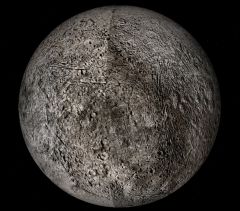(308933) 2006 SQ372
| 58534 Logos | |
|---|---|

| |
| (308933) 2006 SQ372 from 2006 SQ372.zip in Orbiter 2010P1 | |
| Designation | |
| Name | (308933) 2006 SQ372 |
| Reference body | Sun |
| Planetary mean orbits | |
| Epoch | 2008.36550308 |
| Semimajor axis (a) | 151809167773350 m |
| Eccentricity (e) | 0.976 |
| Inclination (i) | 19.4599999748989° (0.339641072 radian) |
| Longitude of the ascending node (LAN, ☊) | 197.359999900534° (3.44458181 radian) |
| Longitude of periapsis (ϖ) | 319.700000078732° (5.57981762 radian) |
| Mean longitude (L) | 319.719690346319° (5.58016128 radian) |
| Selected physical parameters | |
| Mean radius | 86479 m |
| Mass | 1.702349507923427×1017 kg |
| Rotation elements | |
| SidRotPeriod | 98173 seconds (27.27 hours) |
| SidRotOffset | 0 |
| Obliqutiy | 0.31952784569 |
| LAN | 1.52198368 |
| Note | *Elements given are from 2006 SQ372.cfg (2006 SQ372.zip) |
(308933) 2006 SQ372 is a trans-Neptunian object and the most distant object modeled in Orbiter to date. It was discovered on 27 September 2006 with images by the Sloan Digital Sky Survey. Later, prediscovery images were discovered back as far as 13 September 2005. It has a very eccentric orbit crossing that of Neptune near periapsis and as much as 1500 AU from the Sun at apsoapsis with an orbiter period of about 22500 years.
2006 SQ372 in Orbiter[edit]
(308933) 2006 SQ372 was introduced to Orbiter with the release of 2006 SQ372.zip in September 2010.
| Add-on | Source | Version | Author | Type | Release Date | Compatibility | Wiki article |
|---|---|---|---|---|---|---|---|
| 2006 SQ372 | O-F Resources | 2010-09-17 | IgnoreThisBarrel | Scenery | 18 September 2010 | ||
See also[edit]
(308933) 2006 SQ372 at Wikipedia
Gallery[edit]
(308933) 2006 SQ372 imaged by Hubble in September 2009
from Wikimedia Commons
| edit The Solar System | |
|---|---|
| Central star |
Sun (Sol) |
| Planets |
Mercury - Venus - Earth - Mars - Jupiter - Saturn - Uranus - Neptune |
| Natural satellites |
Moon - Phobos - Deimos - Io - Europa - Ganymede - Titan - more... |
| Add-ons |
Planets - Dwarf Planets - Small objects - Natural satellites - Alternative star systems |


